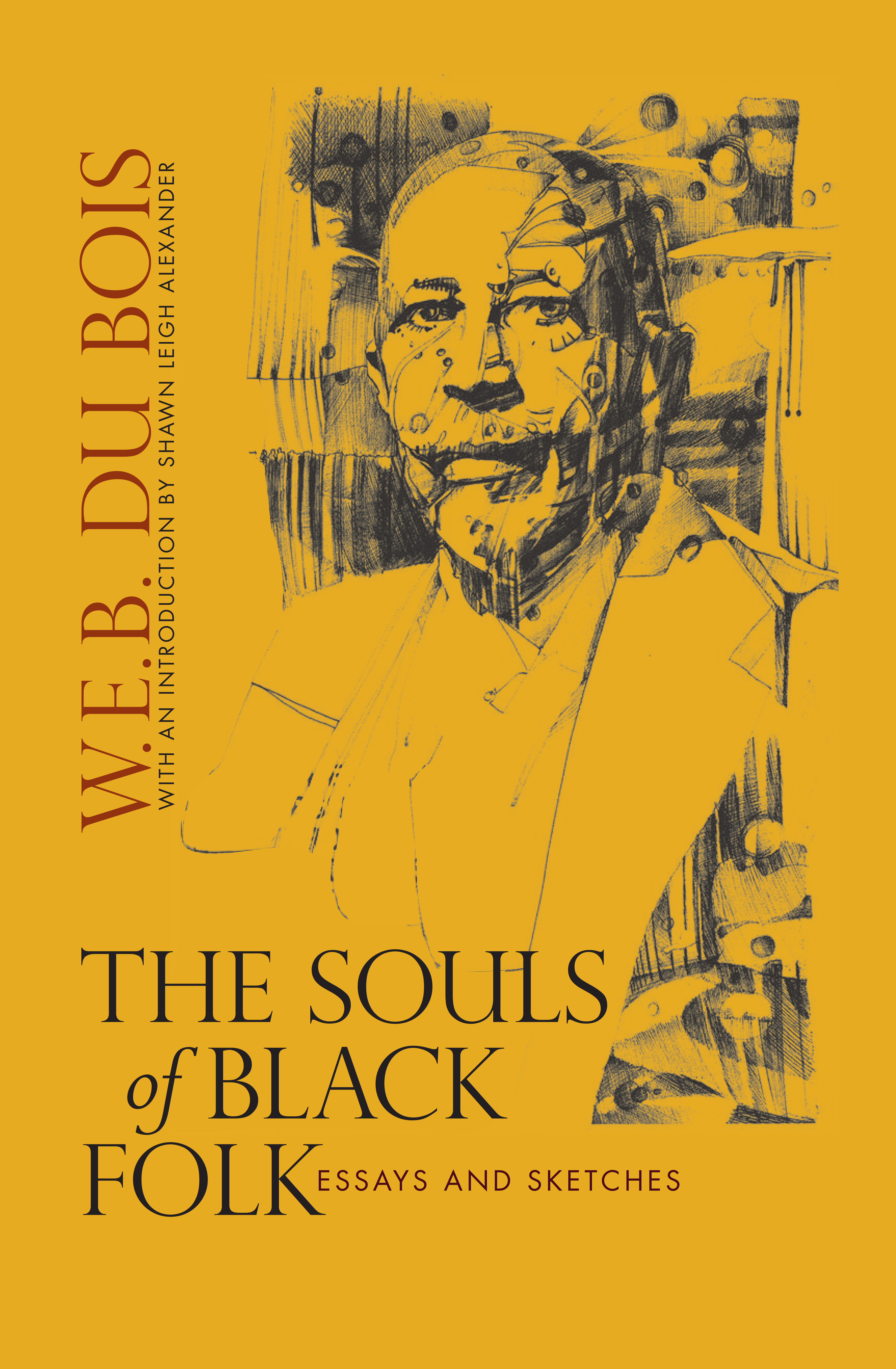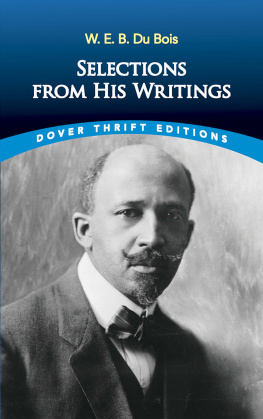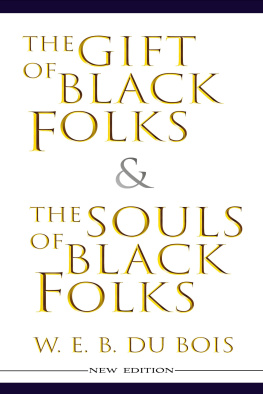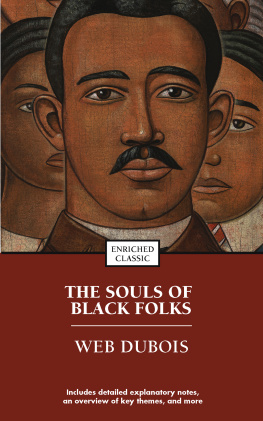
The Souls of Black Folk
The Souls of Black Folk
Essays and Sketches
W. E. B. Du Bois
With an introduction by Shawn Leigh Alexander
A CO-PUBLICATION OF
UMass Amherst Libraries
and
University of Massachusetts Press
Amherst and Boston
Introduction copyright 2018 by University of Massachusetts Press
All rights reserved
This volume is reprinted from the unabridged text of The Souls of Black Folk by W. E. B. Du Bois as first published by A. C. McClurg & Company, Chicago, 1903.
Printed in the United States of America
ISBN 978-1-61376-606-4
Library of Congress Cataloging-in-Publication Data
A catalog record for this book is available from the Library of Congress.
British Library Cataloguing-in-Publication Data
A catalog record for this book is available from the British Library.
Portions of the introduction were previously published in W. E. B. Du Bois: An American Intellectual and Activist. Used by permission of Rowman & Littlefield.
Contents
J. Douglas Wetmore to Du Bois, October 20, 1903
Du Boiss critique of Souls, 1904
Annah May Soule to Du Bois, February 26, 1904
Casely Hayford to Du Bois, June 8, 1904
D. Tabak to Du Bois, ca. 1905
Hallie E. Queen to Du Bois, February 11, 1907
Du Bois to A. J. McMaster, March 27, 1907
W. D. Hooper to Du Bois, September 2, 1909
Du Bois to W. D. Hooper, October 11, 1909
Yasuichi Hikida to Du Bois, October 15, 1936
J. Saunders Reddings review of Souls, 1954
Langston Hughes to Du Bois, May 22, 1956
The Souls of Black Folk
When The Souls of Black Folk was published in 1903, W. E. B. Du Bois had already established himself as a leading intellectual in the nation. His growing popularity and increasing influence during this time was a bit of an anomaly, for he had not risen through the typical path of black leadership. Du Bois was not a preacher, a school president, a newspaper editor, or one of the few political leaders who were able to secure positions before southern disfranchisement eliminated that form of leadership for generations. Instead, he wrote his way to prominence. As William H. Ferris explained in The African Abroad (1913), Du Bois is one of the few men in history who was hurled on the throne of leadership by the dynamic force of the written word. He is one of the few writers who leaped to the front as a leader and became the head of a popular movement through impressing his personality upon men by means of a book.
The Souls of Black Folk may have propelled Du Bois to the front as a leader, but over much of the previous decade, he had been building his reputation as a scholar of note. Du Bois, who was born and raised in Great Barrington, Massachusetts, attended Fisk University from 1884 to 1888. After graduation he enrolled in Harvard, where he earned a second degree in philosophy, then studied in Berlin before becoming the first African American to earn a doctorate (in history) from Harvard in 1895. After receiving his degrees, the young scholar took a Along the way, Du Bois built his scholarly reputation, publishing his Harvard dissertation, The Suppression of the African Slave Trade (1896), as well as the results of his research at the University of Pennsylvania, The Philadelphia Negro (1898), a sociological study of the citys seventh ward. Additionally, between 1897 and 1903 Du Bois had become one of the most widely published authors in the country. His essays appeared in the countrys leading black and white periodicals, including A.M.E. Church Review, Colored American, The Southern Workman, The Missionary Review of the World, The Worlds Work, Harpers Weekly, Annals of the American Academy of Political and Social Sciences, The New World, The Nation, The Atlantic Monthly, The Independent, Colliers, Booklovers Magazine, World Today, Outlook, and The Dial.
Publishing with The Dial, a journal owned by the Chicago-based A. C. McClurg & Company and edited by Francis Browne and W. R. Browne, was an extraordinary bit of serendipity as the editors approached Du Bois to see if he would be interested in putting together a collection of essays.
Although Du Bois proved himself to be a master of the essay form through his lyrical, moving, and challenging prose, he did not think that the meaning of Souls was altogether clear. He believed the book conveyed a clear central
In addition to inspiring the community, The Souls of Black Folk offered a testament against the rise of the Jim Crow system that had developed from approximately 1890 to 1910. After Reconstruction, the nation continued to backpedal away from the advancements of
Though not exactly part of the reform literature of the period, Souls is comparable to the genres best works. Even arch-racist Thomas Dixon, author of The Leopards Spots (1902) and The Clansman (1905), praised the power of the collection a couple of years after its publication. Du Boiss book, he stated, was a remarkable contribution to the literature of our race problem. In it for the first time we see the naked soul of a Negro beating
The bars caging the black community were fully visible when Souls appeared. The veil of segregation had fallen upon the former Confederacy, where signs indicated segregated railway cars, waiting rooms, restaurants, hotels, wharfs, theaters, and parks. The bulk of southern black males were stripped of their franchise through a variety of nefarious deeds, and in the course of daily human interaction, Jim Crow was an assault on the dignity and humanity of the majority of black people throughout the region. The lions share of southern blacks were sharecroppers or tenant farmers, bound to the land by a cycle of debt, eking out an existence any way they could. Those who challenged political and economic oppression were frequently met with terrorist violence, lynch mobs, and other sorts of vigilantes who were acting largely without the fear of punishment.
The Souls of Black Folk was Du Boiss first attempt to force the South, the nation, and the world to recognize that inner culture, the humanity of black people. John Spencer Bassett, a Duke University professor of history perceived Du Boiss attack. In an article on the leadership of Booker T. Washington and Du Bois, Bassett compared Souls to Charles Carrolls racist The Negro a Beast, or In the Image of God (1900) and rhetorically asked, a more stupid book it is impossible to conceive; yet it is worth while to place it and its author side by side with The Souls of Black Folk and its author. Can a beast write a book like the latter?
A historical, cultural, and literary work, The Souls of Black Folk lays bare the tragedy and beauty of the souls of black Americans, pushing readers to acknowledge the multifaceted dimensions of the black American experience. It is a perfect prcis of Du Boiss previous decade of scholarly workhistory, sociology, and the spiritual and cultural life of black America. Within the collection, readers also find two of Du Boiss most famous proclamations. The first is that the problem of the twentieth century was what he called the color-line, a theory he initially suggested during his address before the Pan-African Conference in 1900.
Through much of the twentieth and early twenty-first centuries, double-consciousness has become a catchall metaphor for black cultural identity. Many scholars have followed the description of biographer Arnold Rampersad when he explained that double-consciousness is about the inherent and defining condition of the black American who possesses... not one but two souls, African and American, perpetually at war within the dark body. In Du Boiss words, One ever feels his two-nessan American, a Negro; two souls, two thoughts, two unreconciled strivings.
Next page










